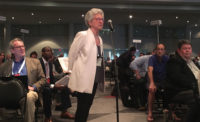Dispute resolution procedures in public sector construction contracts are quite rigid in implementation. They are part of what attorneys call non-negotiable contracts of adhesion, generally required to be bid by contractors on a “take it or leave it” basis. By contrast, the private sector offers the potential for some negotiations as well as options for tailored dispute resolution procedures, even in standard construction contract documents. Promulgated by well recognized professional and construction associations such as the American Institute of Architects (AIA) or ConsensusDocs, these contracts are best used as starting points.

In 2017, both AIA and ConsensusDocs published their latest and revised general conditions for construction contracts, and both included dispute resolution procedures.
There are related subject matters in both documents. Both include a Table of Articles, but AIA-A201 has an eight-page detailed Index of Topics, too. Since there is a natural and significant segue between types and notices of claims and the contractual dispute resolution process, the claims subject should be carefully reviewed in both documents.
Unless the parties decide otherwise, unresolved claims for dispute resolution procedures under AIA-A201 are to be initially referred to a designated initial decision maker (IDM), who is the owner’s designated architect, in the absence of another contractual selection by the parties. Specified time periods are provided for the IDM to approve or reject the claim, suggest a compromise, or determine that the claim is inappropriate for IDM resolution.
The comparable initial dispute resolution procedure under ConsensusDocs 200 calls for good-faith, direct discussions between the parties’ representatives with resolution authority and, if unresolved, referral to senior executives of the parties. If still unresolved, the matter is submitted to optional dispute mitigation.
At those junctures, both the AIA and ConsensusDocs dispute resolution procedures follow similar, but not identical, paths. Unless otherwise agreed, under AIA-A201, nonbinding mediation is the next step, administered by the American Arbitration Association (AAA). If the claim remains unresolved in mediation for a specified period, either party may demand that the other files for binding dispute resolution, which would be AAA arbitration unless otherwise agreed. On the other hand, ConsensusDocs 200 requires mediation within a specified time, with a checkoff option for administration by the AAA, JAMS or another selected administrator.
Lastly, both dispute resolution procedures call for binding arbitration, unless otherwise agreed. In the instance of AIA-A201, it is to be administered by the AAA. The demand for arbitration must be made within the applicable statute of limitations, and the award rendered is final, with judgment permitted to be entered upon in accordance with applicable law and in a court of competent jurisdiction. Consolidation of other arbitrations and joining claims or disputes of other parties and entities may also be available for substantially common questions of law or fact.
As for ConsensusDocs 200, provision is made for binding arbitration, where not barred by statute of limitations, with AAA administration, and fast track rules for claims or counterclaims up to $250,000. As an alternative to arbitration, litigation may be selected as a checkoff option and, if neither arbitration nor litigation is checked off, “then litigation is the default and not arbitration.” Multiparty proceedings through consolidation and joinder are also included.
In sum, there are some procedural noted differences between the dispute resolution requirements of AIA-A201 and ConsensusDocs 200, but as these are consensual documents, they can be further negotiated. I recommend that these standard construction contract general conditions be considered as points of departure, with input of a knowledgeable attorney to maximize protection. This is why the finished product often includes a significant addendum to the AIA or ConsensusDocs standard contract and general conditions, although they both can be quite useful as baseline documents.
If you have an idea for a column, please contact Viewpoint Editor Richard Korman at kormanr@enr.com.





Post a comment to this article
Report Abusive Comment